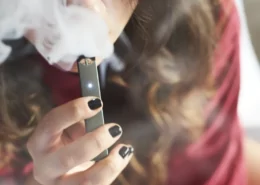Japan’s Heated Tobacco Shift Linked to 50% Drop in Cigarette Sales
A growing body of evidence from Japan suggests that the introduction and widespread adoption of heated tobacco products (HTPs) have played a significant role in the country’s remarkable decline in traditional cigarette use. This trend is providing a compelling case study for tobacco harm reduction advocates worldwide.
A peer-reviewed study published in the journal Tobacco Control in October 2024, titled “Transformation of the Tobacco Product Market in Japan, 2011–2023,” reported that both per capita and total cigarette sales in Japan plummeted by more than 50% between 2011 and 2023. The study noted that while cigarette sales were on a relatively flat decline until 2015, the rate of decrease accelerated markedly after HTPs were introduced to the Japanese market. The authors concluded, “Halving the cigarette market in Japan in just over a decade is a remarkable achievement and figuring out how to replicate this type of change elsewhere should be a priority for public health research.”
Another analysis, published in September 2024, projected significant public health and economic benefits if more Japanese smokers switched to HTPs. The study estimated that if half of Japan’s smokers moved away from combustible tobacco to HTPs, up to 12 million tobacco-related illnesses could be prevented, potentially saving the Japanese healthcare system as much as 454 billion yen. The researchers recommended that Japan continue to prioritize cost-efficient measures that promote public health, including encouraging smokers to switch to reduced-risk products and adopting a harm-based taxation approach.
At the 2023 Global Tobacco and Nicotine Forum, Dr. Hiroya Kumamaru, vice director at Japan’s AOI Universal Hospital, outlined the country’s progress. He noted that by 2019, almost one-third of male and one-quarter of female tobacco consumers in Japan were using HTPs, a result he described as “amazing.” Crucially, he stated that concerns about unintended consequences, such as HTPs acting as a gateway for youth initiation or leading to widespread dual use (using both HTPs and cigarettes), had not materialized. He reported that initiation or re-initiation rates were very low, and there had been no increase in initiation among younger people following the launch of HTPs.
International health advocates are taking note. Dr. Lorenzo Mata, president of the Philippine health advocacy group Quit for Good, emphasized that newer smoke-free alternatives like heated tobacco and vapes may offer better chances of reducing smoking prevalence. “If we really want to help smokers, education on and access to these less harmful alternatives should be prioritized,” said Mata. As the global health community continues to combat smoking-related diseases, Japan’s decade-long experience with reduced-harm alternatives is emerging as a potential model for other countries seeking to achieve similar public health outcomes.
- Austria Plans to Ban Disposable E-Cigarettes - August 5, 2025
- Vaping vs. THC Drinks: Which Cannabis Option Is Right for You? - August 4, 2025
- Colombia’s New Vape Law: A Reality Check on Enforcement - August 4, 2025








